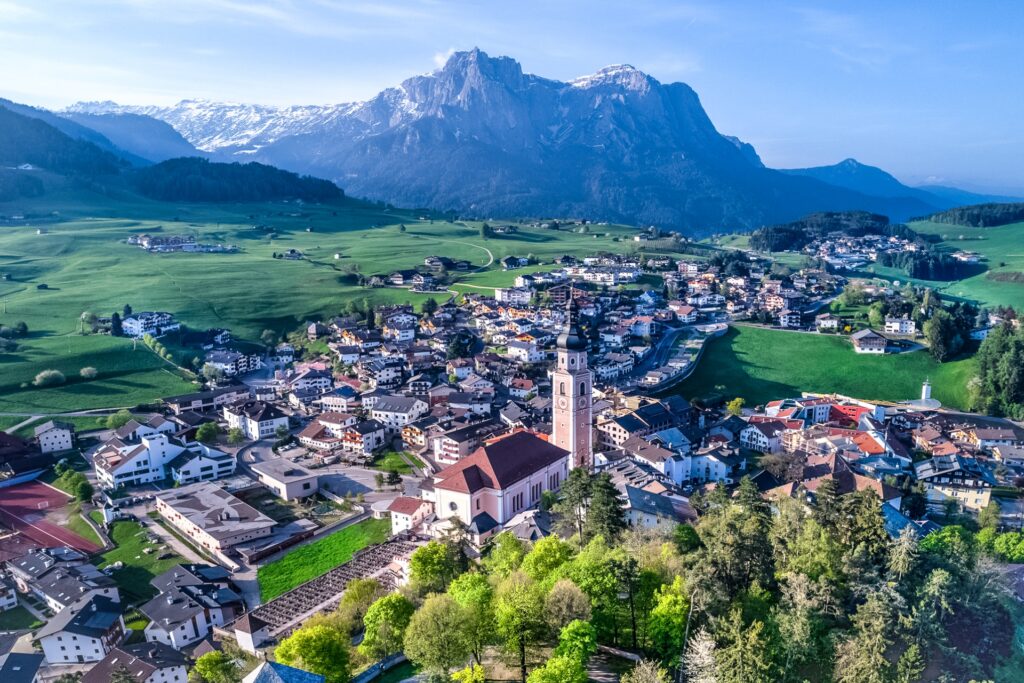Human Mind and Migration — Linguistic Identity and Relations Between Multicultural Groups
The students of Messaggero Veneto Scuola are part of the impactmania’s internship program for the 2020-2021 academic year. A series of migration topics were explored in this Program that will culminate in an online exhibition and presentation, May 2021.
COVID made us all Digital Nomads, however, it didn’t stop us from cross-cultural, interdisciplinary learning.
BY MARTINA FAGGIANI
One of the most complex aspects of the phenomenon of migration is precisely the relationship between “hosts and hosted”.
What are the psychological factors that influence this?

Jeroen Vaes, professor at the University of Trento
To answer this and other questions on the subject, I interviewed Jeroen Vaes, professor at the University of Trento and co-director of the Social Mind and Behavior Lab. He recently co-edited a book entitled Humanness and Dehumanization and received the Jos Jaspers award from the European Association of Social Psychology for early career scientific achievements. His research focuses on humanness as a dimension of social judgment in different contexts, including intergroup relations, which is interesting for our research on second generation immigrants.
A question about the Social Mind and Behavior Lab: what are you currently researching and how?
We have different lines of research in social psychology. We focus on the concept of dehumanization in intergroup relations, which is when people are brought to see other people of different ethnicities as less human, for example.
We have projects on immigration with the International Migration Laboratory.
We test subjects in the laboratory using behavioral and neuroscientific measures and we also do wide-ranging questionnaires to collect people’s opinions on various issues.
What are the reasons behind the prejudice that migrants are a threat to the “indigenous”?
As Einstein said, “It is easier to smash an atom than a prejudice”. There are many factors that determine prejudice, and we can summarize it in three levels.
It starts with social categorization: when we first meet someone we automatically and unconsciously categorize them into a social category (man or woman, foreign or Italian), which influences our judgment. After some time this categorization can change.
Other influences are beliefs and myths we believe in (for example, social dominance). Then there are factors featuring the social and historical context of the relations people have with the other group.
You mentioned a threat: it could be a concrete one but also a symbolic one. They are bringing values and beliefs different from ours (religion, the way they raise their children). The perception of immigrants can also change through time: for example, Albanian immigrants were perceived in a negative way some years ago, while now they are not considered as problematic as then.

South Tyrol. Photo: castelrotto.com
How does a person’s accent determine their social discrimination and what is the connection between linguistic identity and intergroup relations?
Language and accent can be very determining. In many contexts it is the first difference we notice between us and the other person.
We can take as an example the region of Alto Adige, near where I live. There, social identity is entirely determined by language: there are people speaking in German and others in Italian and they identify as separate groups.
Same thing for Belgium and Canada. In everyday life, when we talk to someone that looks like us, but then speaks in a different way, we may change our attitude towards them: we can become warier, or more curious.
What role does school have in the development of relationships between people with different backgrounds?
Statistics say that on average 10% of students in Italy have foreign origins and are often second generation immigrants. Potentially, school could be a great meeting point for these groups with different origins because it’s a context where students are all treated on the same level (there are other professional contexts in which hierarchy doesn’t help integration).
I think it would be very helpful to have mixed classes (with Italian and foreign people). Nevertheless, there aren’t national coordinated programs to manage integration in the best way, so it often depends on the school or the teacher.
Do you think the experience of a second generation immigrant in Italy is different from the experiences of second generation immigrants in other countries?
The situation in Italy is definitely different from the one in the United States because there, Jus soli is part of the law, which means whoever was born in the United States is automatically a citizen.
Italy and most countries in Europe don’t have that, but there are certain countries that have legislation that helps second generation immigrants get citizenship. We don’t have that in Italy, and this means that there are lots of young people born and raised here that aren’t citizens. This has concrete consequences: they cannot vote and have more hardships finding a job.
What are the differences between the experiences of today’s immigrants and the ones of immigrants in the past decades?
Immigration is a relatively recent phenomenon in Italy: before the ‘70s, it was predominantly a country of emigration. The number of migrants gradually increased and became significant at the beginning of the millennium.
The first who arrived had a solitary experience; now it’s different. Usually people from the same country are concentrated in the same region: research shows that one of the first things migrants try to do in the country is to form communities with people with the same origins. This has several psychological benefits because they can keep their language and traditions and have support. But there are some long-term disadvantages: ghettoisation can make them appear more threatening to the host population, which doesn’t help integration. As for second generation immigrants, things are different simply because they didn’t exist before.
On the subject, with which language and culture do children of immigrants, born and raised in a country different from their parents’, tend to identify with?
Usually we identify four different “acculturation strategies”, as we call them in Italy.
The first one is integration: migrants identify with both cultures, so they have contacts and adopt elements of both.
Then there is negation of one culture. Some people may reject the host culture.
Then there is assimilation of the host culture: some migrants embrace the new culture and leave their native culture. This usually happens with people who see the new country as an opportunity to build something (people that are not running away from their country for extreme reasons).
The fourth is more frequent with second generation immigrants and it’s marginalization. They feel “neither fish nor fowl,” so they don’t have many contacts with people of the mother culture, or with people of the host culture, because somehow they feel rejected in both. This is a more problematic situation, because these people have a sort of “emptiness of meaning”: they don’t know where they belong.
Surely the place where they live and the family they are raised in are determining in which of these four will be the road taken.
What are the advantages of being a second generation immigrant nowadays?
Living in a globalized world, having lived experiences in different countries and having plurilingual abilities, migrants can see the world under more than one perspective. The problem is that this is not always given credit for, because many people are scared by the message spread by the media: that we are losing our identity because of migrants and globalization. It would be great to embrace this cultural richness: think about how much our literature, food, art, and mentality could benefit from this integration.
Featured image: Leon Zernitsky Art

Martina Faggiani was born and raised in San Vito al Tagliamento, a small town of Friuli Venezia Giulia, Italy. Martina is attending her last year of the scientific high school Licei Le Filandiere and this is her second year at the Messaggero Veneto Scuola newspaper and is part of the impactmania internship program.
Gli studenti del Messaggero Veneto Scuola fanno parte del programma di stage di impactmania per l’anno accademico 2020-2021. Una serie di argomenti sulla migrazione sono stati esplorati in questo programma che culminerà in una mostra e presentazione online a maggio 2021.
Il COVID ci ha resto tutti nomadi digitali, tuttavia, non ci ha fermati dall’apprendimento interculturale e interdisciplinare.
Migranti di seconda generazione: identità linguistica e relazioni tra gruppi multiculturali
DI MARTINA FAGGIANI
Uno degli aspetti più complessi del fenomeno migratorio è proprio il rapporto tra “ospitanti e ospitati”. Quali sono i fattori psicologici che lo influenzano? Per rispondere a questa e ad altre domande sull’argomento, ho intervistato Jeroen Vaes, professore ordinario dell’Università di Trento e codirettore del Social Mind and Behaviour Lab. Recentemente ha co-curato un libro intitolato Humanness and Dehumanization e ha ricevuto il premio Jos Jaspers dalla European Association of Social Psychology per i risultati scientifici raggiunti a inizio carriera. La sua ricerca si concentra sull’umanità come dimensione del giudizio sociale in diversi contesti, compreso quello delle relazioni tra gruppi, che è interessante per la nostra ricerca sugli immigrati di seconda generazione.
Innanzitutto una domanda sul Vostro laboratorio: quali sono le vostre linee di ricerca e in che modalità lavorate?
Abbiamo diverse linee di ricerca in psicologia sociale. Ci concentriamo sul concetto di disumanizzazione nelle relazioni tra gruppi, ossia ciò che avviene quando alcune persone vengono portate a vedere come meno umane altre persone di diversa etnia, per esempio. Inoltre abbiamo progetti sull’immigrazione con l’International Migration Laboratory.
Quanto alle modalità di lavoro, testiamo i soggetti in laboratorio utilizzando misure comportamentali e neuro scientifiche e facciamo anche ampi questionari per raccogliere le opinioni delle persone su varie questioni.
Quali ragioni ci sono alla base dello stereotipo che i migranti siano una minaccia per gli “indigeni”?
Come diceva Einstein “è più facile distruggere un atomo che un pregiudizio”. Ci sono molti fattori che determinano il pregiudizio e possiamo riassumerli in tre livelli.
Si inizia con la categorizzazione sociale: quando incontriamo per la prima volta qualcuno, lo classifichiamo automaticamente e inconsciamente in una categoria sociale (uomo o donna, straniero o italiano), che influenza il nostro giudizio.
Dopo un po’ di tempo questa classificazione può cambiare. Altre influenze sono credenze e miti a cui ci affidiamo (ad esempio quello del dominio sociale). Poi ci sono fattori influenzati dal contesto sociale e storico delle relazioni che le persone hanno con l’altro gruppo.
Hai parlato di minaccia: potrebbe essere concreta ma anche simbolica: stanno portando valori e convinzioni diversi dai nostri (la religione, il modo in cui allevano i figli). La percezione degli immigrati può anche cambiare nel tempo: ad esempio alcuni anni fa gli immigrati albanesi erano percepiti in modo negativo, mentre ora non sono considerati problematici come allora.
In che modo l’accento di una persona determina la sua discriminazione sociale e qual è la connessione tra identità linguistica e relazioni tra gruppi multiculturali?
Il linguaggio e l’accento possono essere molto determinanti. In molti contesti è la prima differenza che notiamo tra noi e l’altra persona.
Possiamo prendere come esempio la regione dell’Alto Adige, vicino a dove vivo. Lì l’identità sociale è interamente determinata dalla lingua: ci sono persone che parlano in tedesco e altre in italiano e si identificano come gruppi separati.
Stessa cosa per Belgio e Canada. Nella vita di tutti i giorni, quando parliamo con qualcuno che ci somiglia ma poi parla in modo diverso, possiamo cambiare il nostro atteggiamento nei suoi confronti: possiamo diventare più diffidenti, o più curiosi.
Che ruolo gioca la scuola nella creazione di relazioni tra membri di gruppi etnici o con origini diverse?
Le statistiche dicono che in media in Italia il 10% degli studenti ha origini straniere e molto spesso sono immigrati di seconda generazione. Potenzialmente, la scuola potrebbe essere un ottimo punto di incontro per questi gruppi con origini diverse perché è un contesto in cui gli studenti sono trattati tutti allo stesso livello (ci sono altri contesti professionali in cui la gerarchia non aiuta l’integrazione).
Penso ad esempio che sarebbe molto utile avere classi miste (con persone italiane e straniere). Tuttavia non esistono programmi nazionali coordinati per gestire al meglio l’integrazione, quindi spesso molto dipende dalla scuola o dall’insegnante.
Pensa che l’esperienza di un migrante di seconda generazione in Italia sia molto diversa da quella dei migranti di seconda generazione in altri stati europei o negli Stati Uniti?
La situazione in Italia è decisamente diversa da quella negli USA perché negli Stati Uniti lo Ius soli fa parte della legge, il che significa che chi è nato negli USA è automaticamente un cittadino americano.
L’Italia e la maggior parte dei paesi europei non ce l’hanno, nonostante ci siano alcuni paesi che hanno una legislazione che aiuta gli immigrati di seconda generazione a ottenere la cittadinanza. In Italia questo non c’è e perciò ci sono tanti giovani nati e cresciuti qui che non sono cittadini. Ciò ha conseguenze concrete: non possono votare e può essere che abbiano maggiori difficoltà a trovare un lavoro.
Quali sono le differenze tra le esperienze dei migranti di oggi e quelli degli scorsi decenni?
L’immigrazione è un fenomeno relativamente recente in Italia perché prima degli anni Settanta era prevalentemente un Paese di emigrazione. Il numero di migranti è gradualmente aumentato ed è diventato significativo all’inizio del millennio.
I primi arrivati logicamente hanno vissuto un’esperienza solitaria, ma ora è diverso. Per esempio, di solito le persone dello stesso paese sono concentrate nella stessa regione: la ricerca mostra che una delle prime cose che i migranti cercano di fare nel paese ospitante è formare comunità con persone con le stesse origini. Questo ha diversi vantaggi psicologici perché possono mantenere la loro lingua e le loro tradizioni e avere supporto. Ma ci sono alcuni svantaggi a lungo termine: la ghettizzazione può farli apparire più minacciosi alla popolazione ospitante, il che non aiuta l’integrazione. Per quanto riguarda gli immigrati di seconda generazione, le cose sono diverse rispetto al passato semplicemente perché prima non esistevano.
A proposito di questo, essendo figli di migranti, nati e cresciuti in un paese diverso dai genitori, con quale lingua e quali tradizioni tendono a identificarsi?
La risposta a questa domanda è piuttosto complessa.
Di solito identifichiamo quattro diverse “strategie di acculturazione”, come le chiamiamo in Italia.
La prima è l’integrazione: i migranti si identificano con entrambe le culture, cioè hanno contatti e adottano elementi di entrambe.
Poi c’è la negazione di una cultura. Può capitare che dei migranti rifiutino la cultura ospitante.
L’assimilazione è un’altra: alcuni migranti abbracciano la nuova cultura e abbandonano quella nativa. Questo di solito accade con le persone che vedono il nuovo paese come un’opportunità per costruire qualcosa (persone che quindi non stanno scappando dal loro paese per ragioni estreme come guerre e povertà) e soprattutto come una meta definitiva.
La quarta modalità è più frequente negli immigrati di seconda generazione ed è l’emarginazione. Non si sentono appartenenti né all’uno né all’altro, quindi non hanno molti contatti con persone della cultura madre, ma nemmeno con persone di quella ospitante, perché in qualche modo si sentono rifiutati da entrambe. Questa è una situazione più problematica, perché queste persone hanno una sorta di “vuoto di significato”: non sanno a cosa appartengono.
Sicuramente il luogo in cui vivono e la famiglia in cui sono cresciuti determinano quale di queste quattro sarà la strategia intrapresa.
Quali sono i vantaggi di essere un migrante di seconda generazione al giorno d’oggi?
Vivendo in un mondo globalizzato, avendo vissuto esperienze in diversi paesi e avendo capacità plurilinguistiche, i migranti possono vedere il mondo sotto più di una prospettiva. Il problema è che non sempre si dà credito a queste cose, perché molte persone sono spaventate dal messaggio diffuso dai media, ossia che stiamo perdendo la nostra identità a causa dei migranti e della globalizzazione. Sarebbe bello abbracciare questa ricchezza culturale: basti pensare quanto la nostra letteratura, cucina, arte e mentalità potrebbero beneficiare da questa integrazione.
Martina Faggiani è nata e cresciuta a San Vito al Tagliamento, un piccolo comune del Friuli Venezia Giulia, in Italia. Frequenta il suo ultimo anno di liceo scientifico Licei Le Filandiere e questo è il suo secondo anno al Messaggero Veneto Scuola e fa parte del programma di stage di impactmania.
